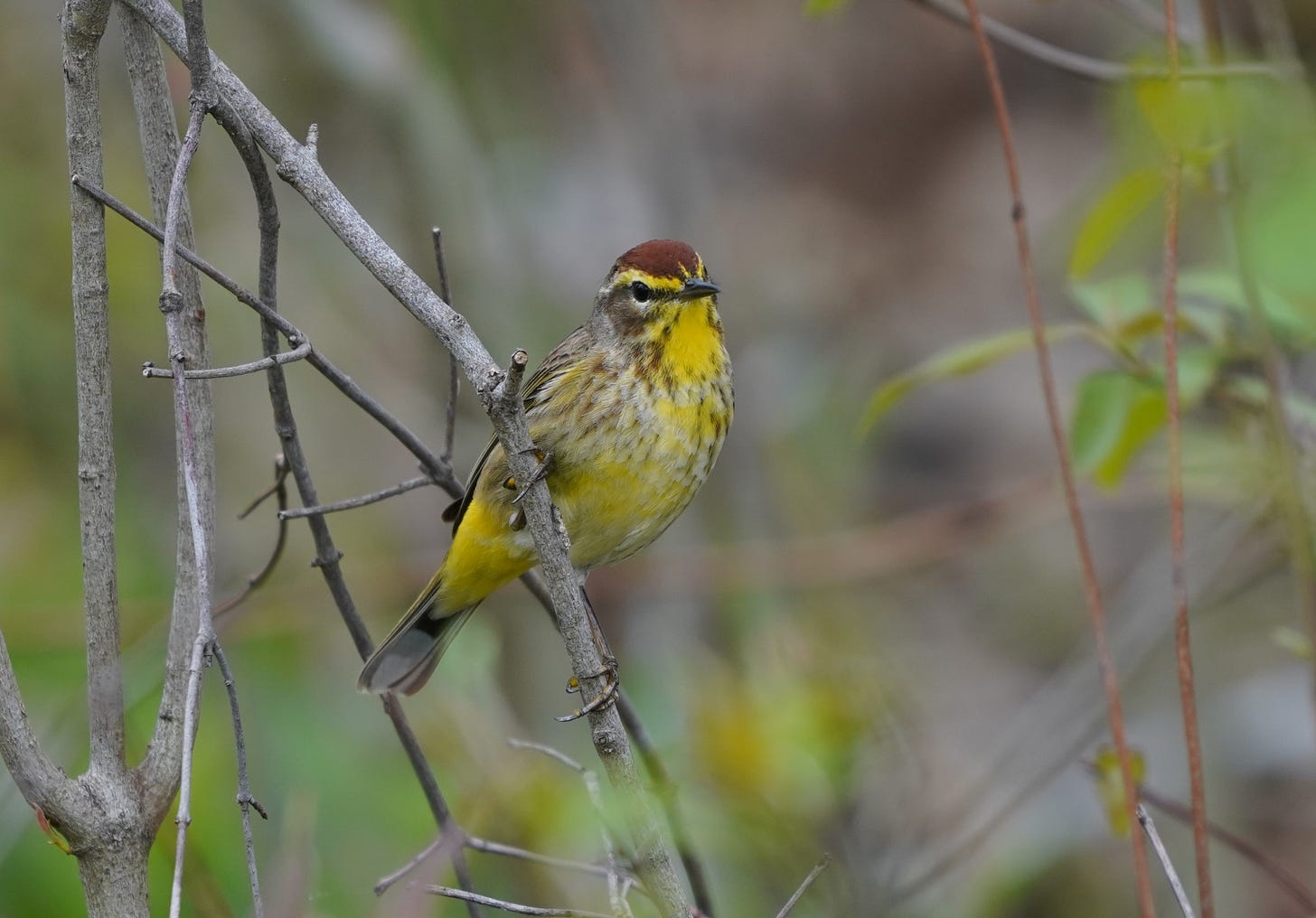Assessing my spring migration predictions
Back on Feb. 19, TWiB published a list of expected arrival dates.
In case you missed it, there was a TWiB piece on February 19 called “Spring arrival dates for common birds.” It forecast when migratory birds, mostly Passerines, would arrive back to a latitude from about Chicago to Detroit to Cleveland. The predictions were compiled from a number of sources, as well as the author’s own observations. Inspiration for this post came from Thomas Bewick’s A History of British Birds, which was published in 1797 and 1804. It was a forerunner to today’s field guides and featured magnificent woodcuts done by Bewick. You can view and handle the woodcuts in-person at the Newberry Library.
These dates were all approximations, mostly contingent on weather patterns. And in this mild spring, we’ve had some unusual ones. Here are the results:
All of them are very early! The only one that was right on time was Piping Plover.
A few comments:
How many gnats are even out on April 8? It turns out, quite a few, at least this year. A single Blue-Gray Gnatcatcher recorded at Chicago’s Montrose Point on that date, which strikes me as incredibly early.
A Spotted Sandpiper was recorded on April 14, which is bonkers early.
A Barn Swallow was seen on April 12 at Montrose Point, but not at my local inland patch until April 26.
What about the vaguely worded “warblers?” Of course, some arrive much earlier and one may winter here (the Yellow-rumped). I chose April 27 as the date, when there were more than just the early arriving species around.*
An Olive-sided Flycatcher was seen on May 1 at Montrose Point.
How has spring migration been where you are? Are you keeping track of dates for any species?





I saw an indigo bunting at our feeders last week and a rose-breasted grosbeak and Tennessee warblers over the weekend here in McHenry County.
The April 30 hummer in my backyard was my earliest ever. I actually had my feeder up and ready but the bird must not have seen it!